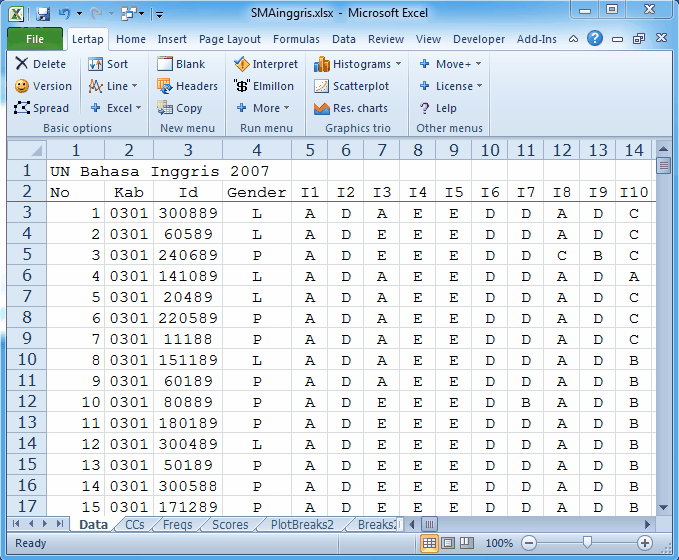NumericFilter2
Consider the following Data worksheet from an Indonesian data set:

The "Kab" field in the second column is a school district code; there were six districts, 0301, 0302, ..., 0306.
The NumericFilter2 macro can be used to create a new workbook for each of the six districts, or for just some of them. It's a way of "breaking out" data records into new workbooks based on the codes found in any column of a Data worksheet.
In this example, the NumerFilter2 macro could also be used to breakout Gender data, creating two new workbooks, one with data only for boys, another with data only for girls. This would be done using the codes found in column 4 of this example, where L is the code for boys, and P the code for girls.
There are other ways to breakout, or select, only certain data records. See, for example, the Recode topic, and also the discussion of using a *tst "card" in the FilteringRecords topic.
And then, not to forget that there are ways to breakout results without Recodes, *tst, and NumericFilter2: there are options on the Run Menu to breakout test scores by groups, and also to breakout item responses by groups, where "groups" can be gender, school district, brand of beer preference, and so on. Interested? See the Breakouts and Ibreaks topics.
Note: using the NumericFilter2 macro is somewhat analogous to using "Select if" criteria in other software packages, such as SPSS. However, there is a difference: NumericFilter2, like a classic "select if" filter, will select only those records meeting the selection criterion, but it creates a physically distinct copy of those records in another workbook. (Classic select-if filters operate without creating a new subset of the data records.)
